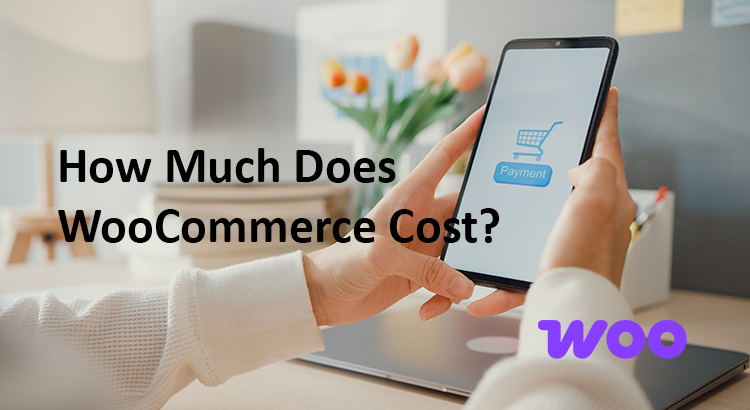To understand how much a WooCommerce website costs, you must first know that the WooCommerce plugin is free. It’s a free e-commerce plugin built for WordPress. However, the real expense comes from other factors such as themes, hosting, extensions, and ongoing maintenance. This guide explains each cost area to help you plan your budget more accurately and work with developers for proper estimates.
Factors Influencing the WooCommerce Website Pricing
When estimating the overall investment required for building and managing an online store on WordPress, several key factors come into play:
1. Hosting Service
Every online store needs web hosting to be accessible to customers. Hosting providers offer various options, from shared plans ideal for beginners to cloud solutions designed for scalability.
Basic shared hosting plans are available from $1 to $15 per month, while cloud-based alternatives range from $10 to $200 monthly. The final pricing depends on your site’s performance needs, expected traffic, and storage requirements.
2. Domain Name
To launch your online store with WordPress, you will need a domain name, which is the address of your website on the internet, such as yourstore.com. It helps customers find and access your WooCommerce store while also boosting your brand’s credibility.
To improve visibility and protect your brand, consider purchasing a domain bundle. This includes different versions of your address like .com, .net, .org, and regional domains such as .co.uk or .com.au. It reduces the risk of lost traffic and prevents competitors from using similar domain names.
3. Themes and Design
A theme defines the look and navigation of your ecommerce platform, including layouts, colors, and fonts. A professional design enhances user experience and boosts sales.
While free themes exist, premium ones offer advanced features like custom checkout pages, better ecommerce tools, and dedicated support. They are regularly updated for compatibility and security. Pricing for premium themes usually ranges from $2 to $200 per year, with custom themes costing more based on features and developer reputation.
4. Plugins and Functionality
Plugins are add-ons that enhance your ecommerce platform by adding features and improving performance. They assist with tasks like inventory management, payment processing, and website ranking services. Both WordPress and the ecommerce platform offer many free and paid plugins.
Free extensions provide basic tools, while premium extensions include advanced features, regular updates, and support. Pricing ranges from $2 to $1,000 per year, with options for one-time payments or subscriptions. Most sites use between five and 30 extensions.
5. Payment Gateway Charges
Online stores accepting credit cards, debit cards, or digital wallets must pay transaction fees for securely processing payments. These fees typically range from 2% to 3% of each sale, plus a small fixed charge.
The exact pricing depends on the payment gateway you choose and your sales volume. Some gateways provide discounted rates for businesses with higher sales, while others offer plans customized to fit your budget and requirements.
6. Security
Although WordPress and the ecommerce platform include built-in security features, these may not fully protect against all online threats such as hacking and data breaches. Enhancing your store’s security helps keep sensitive information like credit card details and personal data safe. A secure site also prevents potential financial losses and protects your brand’s reputation.
SSL certificates
An SSL certificate verifies your website’s authenticity and encrypts data shared between you and your visitors, such as passwords or payment information. Many hosting providers include SSL certificates with their plans. Advanced SSL certificates with higher validation and extra features can range from $8 to $1,000 per year depending on the type and level of validation.
WordPress security plugins
Security plugins add features like firewall protection, login monitoring, and regular scans to safeguard your online store from malware, brute force attacks, and unauthorized access. Some plugins include extra security functions that affect pricing, such as maintenance mode, automatic issue fixes, and scheduled scans.
Website backups
Regular website backups protect your ecommerce platform against data loss from hacking, server failures, or accidental deletion. They allow quick restoration of your site, preventing loss of traffic and revenue due to downtime. Many hosting providers offer backup services as part of their hosting packages.
7. Website Development
WooCommerce development cost covers creating and customizing your ecommerce platform’s design, functionality, and user experience. You have two main choices: using a page builder plugin or hiring a web developer.
Using page builder plugins
One benefit of open-source software like WordPress is the ability to modify its source code to fit your needs. Even without technical skills, page builder plugins and custom themes let you create unique sites without coding.
Popular plugins offer drag and drop features, templates, and widgets to customize themes and build pages without writing code. These tools suit users of all levels and are ideal for a do-it-yourself approach.
Many plugins have free versions, with premium plans ranging from $20 to $350 per year. Some also offer one-time purchase options.
Hiring a WordPress developer
While page builders allow customization without coding, professional developers can create more advanced, tailored websites. This option is great for business owners seeking custom solutions but lacking time or expertise to build or manage their store.
Developer fees vary by location, skills, and experience. Building a small to medium-sized ecommerce site with a custom design can take days or weeks.
Website maintenance
Since WordPress is self-hosted, backend tasks like software updates, performance monitoring, security checks, and SEO services usually require attention to keep the site running smoothly.
Managing maintenance can be challenging for non-technical users, but many plugins and hosting tools simplify or automate these processes.
How much does it cost to build and maintain a WooCommerce store?
To get a clearer picture of the pricing involved, let’s break down the typical expenses for building and maintaining WooCommerce websites of various sizes. These estimates can help you create a rough budget and choose tools and services that suit your needs.
The figures provided in the tables are approximate values. Actual expenses can vary based on your specific requirements, the features you need, and the professionals or agencies you work with. It’s always best to consult experienced developers to get accurate quotes tailored to your project.
1. Pricing for a small-scale store
The estimated price for creating a small online store with basic features. Typically, such a store has about ten products, few pages, and low visitor traffic.
| Cost factor | Description | Estimated price |
| Hosting service | Shared hosting for basic ecommerce stores | $1 to $15 per month |
| Domain name | Annual fees for a single domain | $0 to $20 first year |
| Premium themes | Free or entry-level premium themes | $0 to $50 per year |
| Premium plugins | Essential add-ons for basic functions | $0 to $200 per year |
| Payment gateway fees | Local payment methods and in-person cash | 0% to 3% per transaction |
| Security | Basic security plugins and SSL certificates | $0 to $100 per year |
| Website development | DIY using page builder plugins | $0 to $350 |
| Website maintenance | Self-maintenance | Free (excluding renewals) |
| Total Estimated Price | Excluding transaction and renewal fees | $75 to $920 per year |
2. Pricing for a mid-sized store
Cost estimation for a medium online store with a wider product range, more pages, and moderate traffic.
| Cost factor | Description | Estimated price |
| Hosting service | VPS or cloud hosting for advanced stores | $10 to $200 per month |
| Domain name | Annual fees for 3 to 10 domains | $10 to $200 first year |
| Premium themes | Advanced customization options | $50 to $150 per year |
| Premium plugins | Additional functionality through advanced plugins | $200 to $500 per year |
| Payment gateway fees | Local and international payment methods | 2% to 3% per transaction |
| Security | Enhanced security plugins and multi-domain SSL | $100 to $400 per year |
| Website development | Page builders combined with professional assistance | $500 to $2,000 |
| Website maintenance | Professional maintenance services | $50 to $150 per month |
| Total Estimated Price | Excluding transaction and renewal fees | $1,420 to $6,550 per year |
3. Pricing for a large-scale store
This includes expenses for building a large ecommerce store with many products, numerous pages, and high traffic volumes. It typically features custom integrations and comprehensive security.
| Cost factor | Description | Estimated price |
| Hosting service | VPS or dedicated hosting for high-traffic stores | $20 to $500 per month |
| Domain name | Annual fees for 12 to 25 domains | $250 to $1,500 first year |
| Premium themes | Custom-built themes | $200 to $500 |
| Premium plugins | Specialized add-ons for advanced functionality | $500 to $1,000 per year |
| Payment gateway fees | International payment methods | 2% to 3% plus additional fees |
| Security | Full security solutions and multi-domain SSL | $300 to $1,100 per year |
| Website development | Custom development by professional developers | $2,000 to $10,000 |
| Website maintenance | Full maintenance services | $400 to $1,500 per month |
| Total Estimated Price | Excluding transaction and renewal fees | $6,450 to $30,700 per year |
Summary
Understanding how much WooCommerce costs is key to planning your ecommerce store. While the WooCommerce plugin itself is free, building and maintaining a fully functional online store involves various expenses. These costs can range from a few hundred to several thousand dollars annually, depending on the scale and complexity of your store. By understanding and planning for these pricing components, you can create a realistic budget that aligns with your business goals.


